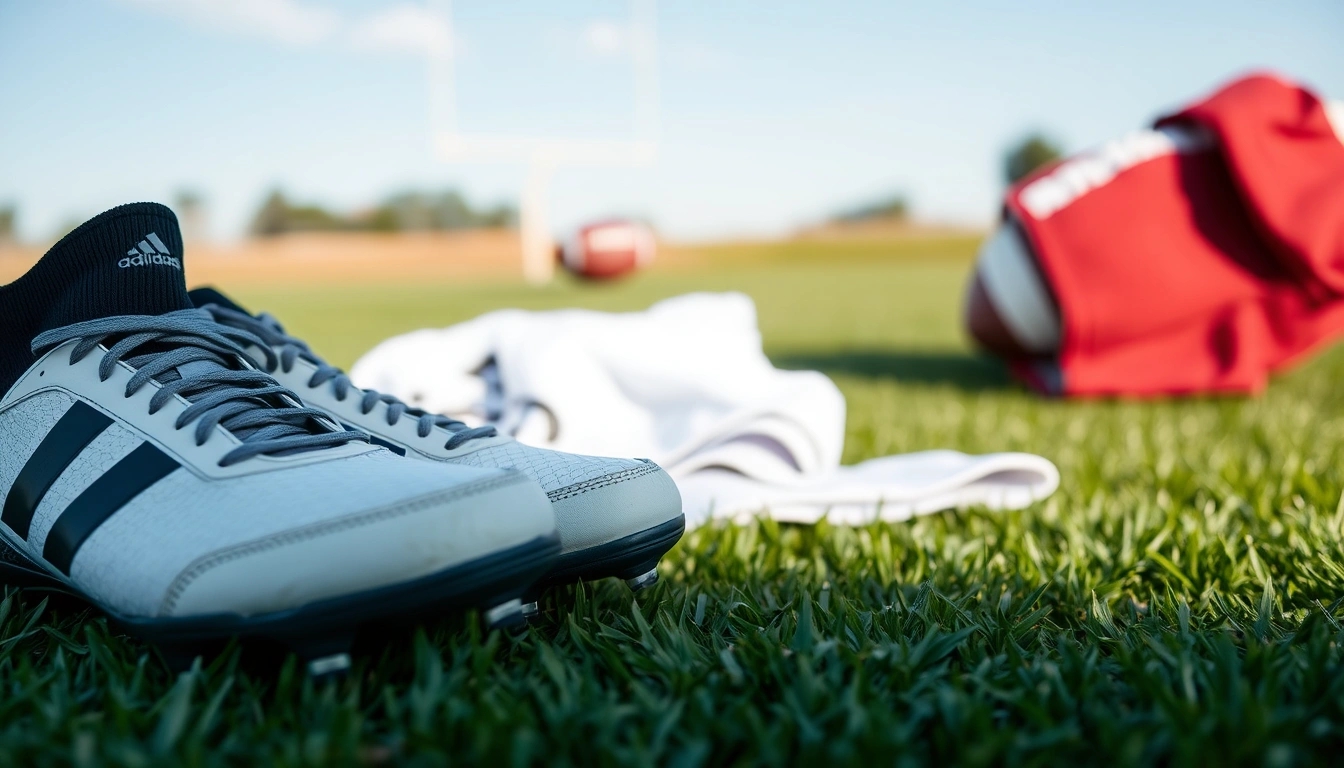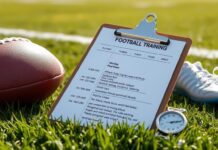Alright, let’s be honest here — stepping onto the pitch for your very first football training can feel like a bit of a minefield. You want to look sharp, but more importantly, you want to not get completely wrecked by your own gear. So, what’s the magic formula? Well, comfort beats style every time, especially when you’re just starting out. Forget about the flashy stuff you see pros rocking on TV; your priority is to move freely and avoid distractions like chafing or overheating.
- Breathable fabrics: Think lightweight, moisture-wicking materials that keep sweat at bay. Cotton? Nah, it’s a no-go here — it soaks up moisture and turns into a soggy nightmare.
- Proper fit: Too tight and you’ll feel like a sausage in a casing. Too loose and you’re tripping over your own clothes. Aim for that Goldilocks zone — just right.
Now, onto the essentials. Your first session demands a simple but effective kit. A moisture-wicking shirt paired with flexible shorts is your best bet. If you’re wondering what “moisture-wicking” really means, it’s just fancy talk for “keeps you dry.” The less you feel like you’re swimming in sweat, the better you’ll play — or at least, the less you’ll stink.
| Essential Item | Why You Need It | Tips |
|---|---|---|
| Moisture-wicking shirt | Keeps sweat off your skin | Look for polyester blends, avoid cotton |
| Flexible shorts | Allows full range of motion | Elastic waistbands are your friend |
| Football boots | Traction and support on the pitch | Choose based on surface: firm ground, artificial turf, or indoor |
Speaking of boots — oh boy, this can get confusing. There’s a gazillion types out there. The key? Match your boots to the surface you’ll be playing on. Firm ground boots are the classic choice for grass, turf boots have shorter studs for artificial fields, and indoor trainers are flat-soled for gym floors. Don’t just grab the fanciest pair; ill-fitting boots will ruin your day faster than a red card.
Socks might sound like an afterthought, but trust me, they’re the unsung heroes. Thick, cushioned socks prevent blisters and keep your feet comfy during those relentless drills. Thin or cheap socks? Prepare for a world of hurt and blisters that’ll have you limping off the pitch.
- Layering is smart: Weather is a fickle beast. Bring a light jacket or a hoodie for warming up or cooling down. You don’t want to freeze or overheat, so layers let you adjust on the fly.
- Protective gear isn’t optional: Shin guards might feel awkward, but they’re there to save you from nasty knocks. Don’t be that guy who shows up without them and ends up hobbling after the first tackle.
Finally, a quick heads-up on rookie mistakes: ditch the old sneakers, avoid cotton tees, and please, don’t wear anything that’s gonna weigh you down or cause a wardrobe malfunction mid-game. And if you’re on a budget, don’t freak out. There’s plenty of affordable gear out there that won’t fall apart after one session.
| Common Mistake | Why It’s Bad | Better Alternative |
|---|---|---|
| Wearing cotton t-shirts | Absorbs sweat, heavy and uncomfortable | Moisture-wicking synthetic shirts |
| Old, worn-out sneakers | Poor traction, risk of injury | Proper football boots suited to surface |
| Skipping shin guards | High risk of injury | Lightweight, comfortable shin guards |
To wrap it up, your first football training outfit should be about function over fashion. Get the basics right, stay comfortable, and don’t be afraid to invest a little in quality gear. You’ll thank yourself when you’re not hobbling off the pitch or distracted by itchy clothes. Now, get out there and show them what you’ve got — just make sure you’re dressed for it!
Understanding the basics: Comfort over style
Alright, let’s get one thing straight before you go splurging on that flashy neon jersey or those shiny new boots — when it comes to your first football training session, comfort trumps style every single time. Seriously, you might be tempted to look like a pro right out the gate, but trust me, rocking the latest gear doesn’t mean much if you’re squirming in your clothes or hobbling around because your boots pinch like crazy.
First off, breathable fabrics are your best mate here. You want to avoid anything that feels like wrapping yourself in a plastic bag. Cotton? Nah, it’s comfy but hold up — it soaks up sweat and turns heavy, making you feel like a soggy mess halfway through drills. Instead, look for moisture-wicking materials — polyester blends or technical fabrics that pull sweat away from your skin and keep you cool and dry.
| Fabric Type | Pros | Cons |
|---|---|---|
| 100% Cotton | Soft, breathable initially | Absorbs sweat, heavy when wet |
| Polyester Blend | Moisture-wicking, lightweight | Less natural feel |
| Nylon | Durable, quick-drying | Can trap heat if not ventilated |
Now, about fit — this is where many rookies mess up big time. Wearing clothes that are too tight or too loose can seriously mess with your movement. Imagine trying to sprint or kick with a shirt that’s riding up or shorts that keep slipping down. Not fun, right? You want a fit that feels like a second skin but still gives you room to breathe and move. Think “flexible but snug.”
- Loose gear? You’ll be constantly adjusting, losing focus.
- Too tight? You’ll restrict your range of motion and might even cut off circulation.
- Just right? You’ll forget you’re even wearing it — that’s the sweet spot.
And hey, don’t get fooled by the shiny stuff just yet. That flashy jacket or those designer shorts might look cool, but if they’re made from the wrong materials or don’t fit right, they’re just going to be a distraction. Save the style points for when you’re a bit more seasoned and know exactly what works for your body and playing style.
Here’s a quick checklist to keep in mind when picking your first training outfit:
- Choose moisture-wicking fabrics over cotton- Ensure your clothes fit snugly but allow full movement- Avoid anything too heavy or thick- Prioritize comfort over brand or look
Remember, football is a game of endurance, speed, and agility. If your gear feels like a burden, you’re already starting on the back foot. So, before splashing cash on the latest trends, invest in basics that keep you comfortable and let you focus on what really matters — playing your best.
In the end, it’s not about looking like a superstar on day one. It’s about feeling good enough to actually play like one. Comfort is king, no two ways about it. Get that right, and the rest will follow.
Essential clothing items for beginners
Alright, so you’ve signed up for your first football training session — congrats! But hold on a sec, what exactly should you wear? Jumping straight into the game with the wrong gear is like trying to score a goal with a deflated ball — it just won’t work out well. Let’s break down the must-have clothing pieces that’ll have you feeling comfortable, agile, and ready to tackle whatever the coach throws at you.
First things first: moisture-wicking shirts. Trust me, cotton tees are a rookie mistake. They soak up sweat like a sponge and then cling to you, making you feel like you’re wearing a wet blanket. Instead, look for shirts made from synthetic fabrics like polyester or blends designed to pull moisture away from your skin. It keeps you dry and light — no one wants to be weighed down by sweat when you’re trying to sprint across the pitch.
| Clothing Item | Why It Matters | Tips |
|---|---|---|
| Moisture-Wicking Shirt | Keeps sweat off your skin and prevents chafing | Look for polyester or nylon blends; avoid cotton |
| Flexible Shorts | Allows full range of motion without restrictions | Choose lightweight materials with some stretch |
| Compression Gear (Optional) | Supports muscles and reduces fatigue | Try compression shorts or sleeves if you want extra support |
Next up, flexible shorts. Nothing kills a good run like shorts that feel like stiff cardboard. You want something that moves with you, not against you. Lightweight, breathable fabrics that offer a bit of stretch are perfect here. Bonus points if they have an elastic waistband — nobody wants to be fiddling with drawstrings mid-drill.
Now, if you’re feeling fancy or just want a little extra muscle support, compression gear can be a game-changer. These snug-fitting clothes help with blood flow and can reduce muscle soreness — but hey, no pressure if you’re just starting out. It’s totally fine to keep it simple.
- Pro tip: Avoid clothes that are too baggy or too tight — you want a happy medium where you can move freely without your kit flapping around or cutting off circulation.
- Don’t forget about the weather! If it’s chilly, layering with a lightweight jacket or long-sleeve shirt can save you from freezing your toes off.
And here’s a quick rundown of what you absolutely should NOT wear:
- Cotton T-shirts: Unless you want to feel like a soggy mess halfway through training.
- Old, stiff shorts: They’ll cramp your style and your legs.
- Heavy or non-breathable fabrics: Say goodbye to comfort and hello to overheating.
So, to sum it all up — aim for breathable, moisture-wicking shirts, flexible shorts, and consider compression gear if you’re feeling adventurous. Your body will thank you, and you’ll look like you actually know what you’re doing (even if you don’t just yet).
Checklist for your first session outfit:- Moisture-wicking shirt (polyester blend)- Flexible, lightweight shorts- Compression gear (optional)- Appropriate socks (we’ll talk about those later!)- Weather-appropriate layers
Remember, the right clothing isn’t just about looking sharp — it’s about feeling good enough to give your best shot without distractions. So gear up smart, and get ready to hit the pitch like a pro newbie!
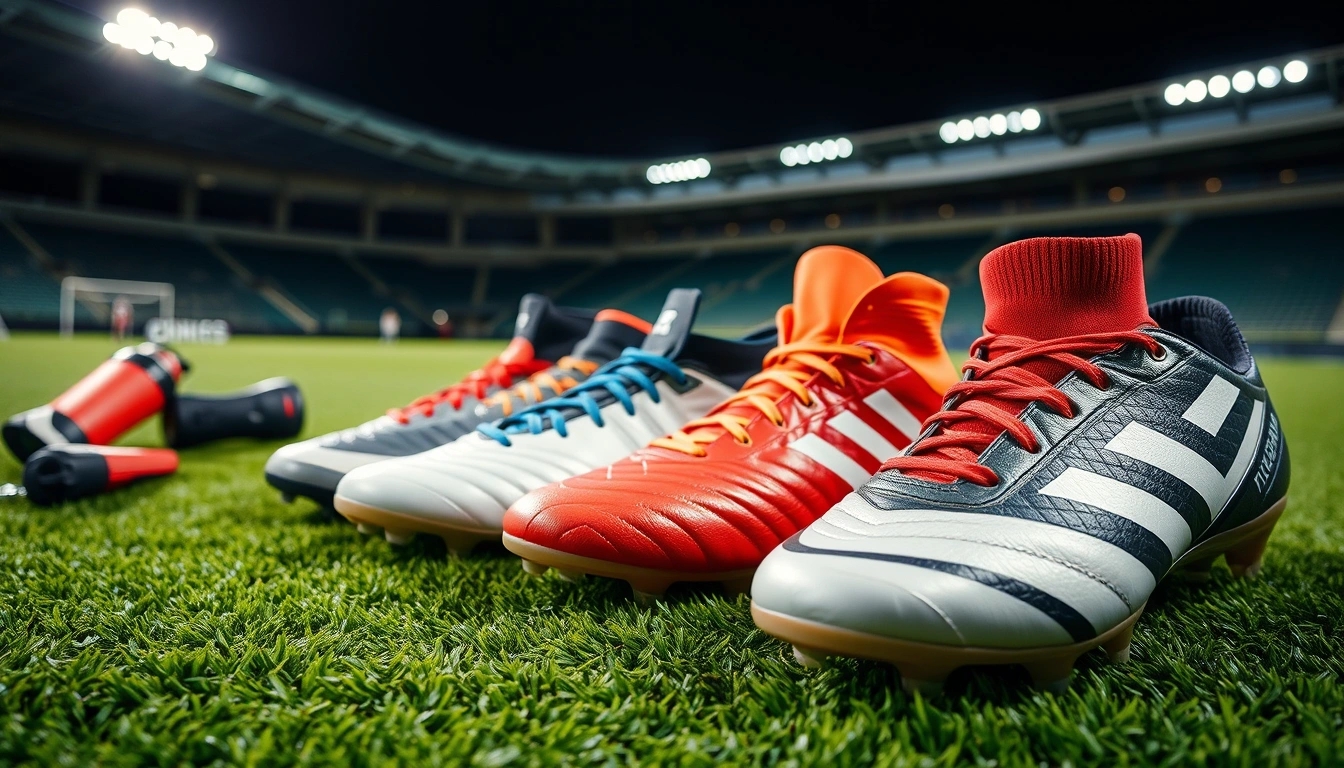
Footwear fundamentals: Picking the right boots
Alright, so you’re gearing up for your first football training session, and someone drops the bomb: “Make sure you have the right boots!” But what does that even mean? There’s a wild jungle of football boots out there, and picking the perfect pair can feel like trying to find a needle in a haystack. Let’s break it down without making it sound like rocket science.
First off, the playing surface you’ll be on is a huge deal. You wouldn’t wear hiking boots to a beach party, right? Same logic here. Football boots are designed specifically for different grounds, and using the wrong ones can turn your game into a slippery disaster or leave you hobbling after 10 minutes.
| Boot Type | Best For | Key Features | Pros | Cons |
|---|---|---|---|---|
| Firm Ground (FG) | Natural grass fields, dry or slightly wet | Molded studs, usually plastic or rubber | Great traction, versatile | Not ideal on artificial turf or hard ground |
| Soft Ground (SG) | Wet, muddy, or soft natural grass | Metal studs, fewer but longer | Excellent grip in slippery conditions | Can damage hard surfaces, less durable |
| Artificial Ground (AG) | Modern synthetic turf fields | Shorter, more numerous studs | Protects joints, prevents slipping | Not great on natural grass |
| Indoor (IN) | Indoor courts or hard surfaces | Flat, rubber soles | Non-marking, good grip indoors | Not suitable outdoors |
So, if you’re training on a typical grass pitch, FG boots are your go-to. But if it’s pouring rain and the field turns into a mud bath, SG boots with metal studs are your best friends. Don’t even think about wearing SG boots on artificial turf unless you want to feel like you’re skating on ice.
Now, let’s talk about skill level and boot choice. If you’re a newbie just learning to dribble without tripping over your own feet, you don’t need the fanciest, flashiest boots. Save your cash and go for comfort and durability. Boots with a snug fit, decent ankle support, and decent traction will do the trick. The top-tier boots with all the techy stuff? They’re mostly for pros who can actually use those tiny advantages.
- Fit Matters: Boots should feel snug but not painfully tight. Your toes shouldn’t be squished, and your heel shouldn’t slip around.
- Try Before You Buy: Sizes vary across brands, so don’t just pick by number. Walk, jog, and maybe even fake a quick sprint in the store.
- Material: Leather boots mold to your feet over time but can be pricier. Synthetic boots are lighter and usually cheaper but might not last as long.
Here’s a quick checklist to keep in mind when picking your boots:
- Identify your playing surface (FG, SG, AG, IN)- Prioritize comfort over style- Check boot weight – lighter boots can help with speed but may sacrifice durability- Don’t ignore ankle support if you’re injury-prone- Set a budget but don’t go too cheap; your feet deserve better
In the end, picking the right boots is about matching your environment, your feet, and your wallet. Don’t get dazzled by flashy designs or the latest “pro model” hype. Remember, even Messi had to start somewhere — probably with some old, beat-up boots that just fit right.
So, lace up wisely, and get ready to hit the pitch without worrying about slipping, sliding, or feeling like you’re wearing clown shoes. Your feet will thank you, and your game will thank you too.
Why socks matter more than you think
Okay, so socks—yeah, those humble foot-huggers—might not be the first thing that pops into your mind when gearing up for football training. You’re probably thinking about flashy boots or that perfect jersey, right? But here’s the kicker: socks are actually a game changer. They’re not just some boring afterthought; they’re the unsung heroes preventing your feet from turning into a blister battlefield during those grueling drills.
Let’s get real. When you’re running, cutting, sprinting, and sliding around on the pitch, your feet are under serious stress. Without the right socks, friction between your skin and boots can cause nasty blisters. And trust me, blisters are like that annoying teammate who just won’t quit—they mess up your whole game. That’s why picking the right socks isn’t just about comfort; it’s about keeping your feet healthy and ready for action.
- Material matters: Cotton socks? Big no-no. They soak up sweat and stay damp, which means your feet are basically living in a swamp. Instead, look for moisture-wicking fabrics like polyester blends or merino wool. These bad boys pull sweat away from your skin, keeping you dry and less prone to blisters.
- Fit is king: Socks that bunch up or slide down are a nightmare. You want a snug fit that hugs your foot without squeezing it. Compression socks are even better because they improve circulation and reduce fatigue.
- Cushioning counts: Extra padding in key areas—like the heel and ball of the foot—can absorb shock and reduce impact. It’s like having a mini airbag for your feet.
| Feature | Why It Matters | Recommended Options |
|---|---|---|
| Moisture-Wicking | Keeps feet dry and blister-free | Polyester blends, Merino wool |
| Fit | Prevents bunching and slipping | Snug, elastic cuffs, compression socks |
| Cushioning | Shock absorption for comfort | Padded heel and forefoot sections |
Now, you might be thinking, “Isn’t any old sock good enough for training?” Nah, mate. Wearing the wrong socks is like trying to score a goal with a deflated ball—possible, but why make life harder? And hey, socks can also keep your feet warm in chilly weather or cool when it’s roasting outside. Versatility, anyone?
Another sneaky benefit: good socks can help reduce odor. Nobody wants to be “that guy” whose feet clear the locker room faster than a fire drill. Breathable socks with antimicrobial properties can keep your feet fresher than a minty breeze.
Pro Tip:Always bring an extra pair of socks to training.If your feet get soaked or sweaty, changing socks mid-session can save you from a world of hurt.
So yeah, next time you’re packing your kit, don’t just toss in any socks willy-nilly. Think about your feet’s well-being and grab socks that have your back (or rather, your soles). Because when the whistle blows and you’re tearing up the field, the last thing you want is to be sidelined by blisters or discomfort. Your feet deserve better than that.
In short: treat your socks like the MVPs they are. They might be small, but their impact on your game? Huge.
Layering up: When and why to bring extra clothes
Let’s be honest, weather is a total diva — one minute it’s blazing sunshine, the next you’re getting drenched or shivering like a leaf. Especially on your first football training session, you don’t want to be caught off guard, sweating buckets or freezing your socks off. That’s where smart layering steps in like your personal hero. It’s all about stacking your clothes in a way that keeps you comfy, no matter what Mother Nature throws at you.
So, why bother with layers at all? Well, think of it like this: wearing one thick jumper might keep you warm, but if you start running drills and get hot, you’ll be stuck with a sweaty mess. Layers let you adjust on the fly. Peel off a jacket, unzip a hoodie, or add a tee if the temperature dips. It’s like having a mini wardrobe right on your body.
- Base Layer: This is your first line of defense — usually a moisture-wicking shirt that sucks sweat away so you don’t feel like you’re swimming in your own juice.
- Mid Layer: A light fleece or long-sleeve top that traps heat but still breathes.
- Outer Layer: A windbreaker or waterproof jacket to keep the rain and wind at bay.
| Layer | Purpose | Material Suggestions |
|---|---|---|
| Base Layer | Moisture management and comfort | Polyester, nylon, merino wool |
| Mid Layer | Insulation and warmth | Fleece, wool blends |
| Outer Layer | Protection from wind and rain | Waterproof synthetics, breathable membranes |
Now, you might be thinking, “Isn’t this just overcomplicating things?” Nah, trust me. You’ll thank yourself when the weather flips halfway through your session. Plus, layering isn’t just about warmth — sometimes you need to cool down fast. Ever tried running in a heavy sweatshirt on a sunny day? Rookie mistake. Layers give you flexibility without the bulk.
Here’s a quick checklist for your layering game:
- Check the forecast but don’t rely on it blindly — pack for surprises.
- Choose breathable fabrics to avoid that nasty clammy feeling.
- Bring an extra tee just in case you get soaked or sweaty.
- Don’t forget a hat or gloves if it’s chilly — extremities get cold fast.
And one last nugget of wisdom: avoid cotton as your base layer. Sounds obvious, but you’d be surprised how many newbies show up in cotton tees thinking they’re fine. Cotton holds moisture like a sponge, making you cold and miserable once you stop moving.
In short, layering is your secret weapon to staying comfortable and focused during your first football training. It’s not about fashion points (though hey, looking sharp doesn’t hurt), it’s about being prepared. So pack smart, layer smart, and don’t let the weather boss you around.
Remember: It’s better to have layers and not need them than to need layers and not have them. Your future self, warmed up and dry on the pitch, will thank you.

Protective gear essentials for newbies
Alright, so you’ve finally decided to jump into football, and someone’s told you, “Don’t forget your shin guards!” And you’re thinking, “Shin guards? What’s that all about? They look like medieval torture devices!” Yeah, I get it. Protective gear can feel super awkward, bulky, and frankly, a bit uncool when you’re just starting out. But trust me on this one: they’re absolutely vital. You don’t want a stray tackle or a rogue ball to send you limping off the pitch on day one. Let’s break down what you really need to keep yourself safe without feeling like you’re suiting up for a space mission.
- Shin Guards: The MVP of protective gear. These bad boys shield your shins from nasty kicks and accidental collisions. They come in various sizes and styles—some slip inside your socks, others strap on with velcro. For beginners, go for lightweight, flexible ones that won’t slow you down or irritate your skin. Pro tip: Make sure they fit snugly but comfortably; too loose and they’ll flop around, too tight and you’ll just want to rip them off.
- Mouthguards: Not just for rugby or boxing! A decent mouthguard can save your teeth and jaw if you get smacked unexpectedly. They’re cheap, easy to mold at home, and well worth the investment. Plus, nothing screams “rookie” like a chipped tooth on your first game.
- Goalkeeper Gloves (if you’re trying that position): These aren’t just for show. Good gloves offer grip, protect your fingers, and cushion the impact of fast shots. Don’t grab the cheapest ones thinking you’ll grow out of the position; a decent pair can make all the difference.
Look, the truth is, no one likes feeling like a walking robot, weighed down by gear. But here’s the kicker: football is a contact sport, and injuries happen. Wearing the right protection isn’t about being paranoid; it’s about being smart. And hey, once you get used to shin guards, you might even forget you’re wearing them (well, almost).
| Protective Gear | Purpose | Tips for Beginners |
|---|---|---|
| Shin Guards | Protects shins from impacts | Choose lightweight, comfortable fit; wear with long socks |
| Mouthguards | Prevents dental injuries | Get a custom mold or boil-and-bite type for better fit |
| Goalkeeper Gloves | Improves grip and finger protection | Invest in mid-range gloves with finger saves |
Now, a quick heads-up: don’t skimp on quality just because you’re new. Cheap gear might save you a few bucks now, but it could leave you vulnerable or uncomfortable, which ruins the fun. And if you’re worried about looking like a dork, remember, every pro player started somewhere—and most of them look pretty goofy when they’re starting out too.
Final quick checklist for protective gear newbies:
- Shin guards that fit well and don’t slip
- Long socks to keep shin guards in place
- A mouthguard, especially if you’re a bit clumsy
- Gloves if you’re going to be a keeper
- Optional: Ankle guards or padded shorts if you’re feeling extra cautious
So yeah, protective gear might cramp your style a little at first, but it’s the difference between a fun session and a painful one. Suit up smart, and you’ll be out there smashing your first training session without a hitch—or a bruise. And who knows? You might even start to enjoy the feeling of being properly geared up. Just don’t forget to breathe through that mouthguard!
Common mistakes first-timers make with their outfit
Alright, so you’re gearing up for your very first football training session — exciting times! But before you lace up and hit the pitch, let’s have a quick reality check on what not to wear. Trust me, rookie mistakes with your outfit can turn what should be a fun, adrenaline-pumping experience into a sweaty, uncomfortable mess. And nobody wants that.
First off, cotton tees. Sounds harmless, right? Well, not quite. Cotton is like that clingy friend who soaks up all your sweat and refuses to let go. It traps moisture against your skin, making you feel heavier, colder, or just plain soggy. Imagine running drills with a shirt that feels like a wet rag stuck to your back — not exactly the vibe you want when trying to impress your coach or teammates.
| Common Outfit Mistakes | Why It’s a Problem | Better Alternative |
|---|---|---|
| Wearing cotton T-shirts | Absorbs sweat, becomes heavy and uncomfortable | Moisture-wicking synthetic shirts |
| Old, worn-out sneakers | Poor support, increased injury risk, reduced traction | Proper football boots or trainers |
| Loose, baggy shorts | Restricts movement, causes chafing | Flexible, fitted athletic shorts |
Speaking of sneakers, old sneakers might seem like a budget-friendly option, but they’re a trap. Worn soles mean less grip, which can lead to slipping or even twisted ankles. Plus, your feet won’t get the support they desperately need when sprinting or changing direction quickly. If you’re serious about football, invest in a decent pair of football boots or trainers designed for the sport. Trust me, your knees will thank you later.
Oh, and don’t even get me started on oversized, baggy shorts. Sure, you might think it’s cool to rock those loose shorts from high school, but they can actually get in the way — flapping around, causing chafing, or just feeling awkward when you’re trying to sprint or kick. Look for shorts made from stretchy materials that let you move freely without the fuss.
- Tip #1: Avoid cotton! Go for moisture-wicking fabrics like polyester blends.
- Tip #2: Check your footwear for wear and tear before training.
- Tip #3: Choose gear that fits well, not too loose or tight.
And here’s a little nugget that’s often overlooked: the importance of socks. Wearing regular socks might seem fine, but football socks are designed to protect your feet and reduce blisters. Don’t underestimate how much a good pair of socks can improve your comfort and performance.
So, to wrap it up — skipping these common mistakes means you’re already ahead of the game. Your first session should be about learning, having fun, and maybe embarrassing yourself a little (hey, it happens to the best of us). But don’t let a lousy outfit be the reason you dread going back. Gear up smart, and you’ll be kicking goals in no time.
Budget-friendly options without sacrificing quality
So, you’re gearing up for your first football training session and staring at the price tags, wondering if you really need to blow a fortune to look and feel the part. Spoiler alert: you don’t. Seriously, you don’t have to empty your wallet just to get decent gear that won’t fall apart after one game. Let’s get real here—football is demanding enough without your kit giving up on you mid-drill.
First things first: focus on value over brand names.
- Check for sales and clearance racks. Seriously, you’d be surprised what you can snag at 50-70% off.
- Shop off-season. Football gear tends to drop in price when the season’s over.
- Consider multi-packs. Socks, for example, often come in bundles that save you a good chunk.
Now, let’s talk fabrics. Don’t get fooled by those flashy polyester blends promising the moon. Look for breathable, moisture-wicking materials that keep you dry and comfortable. It’s not rocket science—if you’re sweating buckets, you’re not playing your best. And trust me, cotton tees? They’re a rookie mistake that’ll leave you soaked and miserable.
| Gear Item | Budget Tips | What to Avoid |
|---|---|---|
| Football Boots | Look for last season’s models or secondhand in good condition | Never buy boots just because they’re flashy; fit is king |
| Shin Guards | Basic models provide enough protection; no need for top-tier | Don’t skimp on protection though—cheap and flimsy is dangerous |
| Training Shorts | Go for flexible, lightweight fabrics; avoid heavy cotton | Old, stiff shorts that restrict movement |
If you’re feeling a bit overwhelmed, here’s a quick rundown of practical tips to keep your budget intact without sacrificing quality:
- Buy used gear: Platforms like local sports stores or online marketplaces often have barely-used items at a fraction of the cost.
- Stick to essentials: Don’t get sucked into buying every single accessory right away. Start with the basics and add later.
- Read reviews: Before buying, check what other players say about durability and comfort.
One last nugget of wisdom—sometimes spending a little more upfront saves you money in the long run. Cheap gear that falls apart quickly? That’s just throwing cash down the drain. So, balance is key. Don’t be that person rocking a thousand-dollar kit that’s uncomfortable or doesn’t fit right. Instead, be smart, shop savvy, and remember: it’s your skills on the pitch that truly count, not the price tag on your shorts.
In the end, looking good and feeling confident doesn’t have to cost a fortune. With a bit of patience and a keen eye, you’ll find gear that fits your budget and your game. Now, go get that ball rolling without breaking the bank!
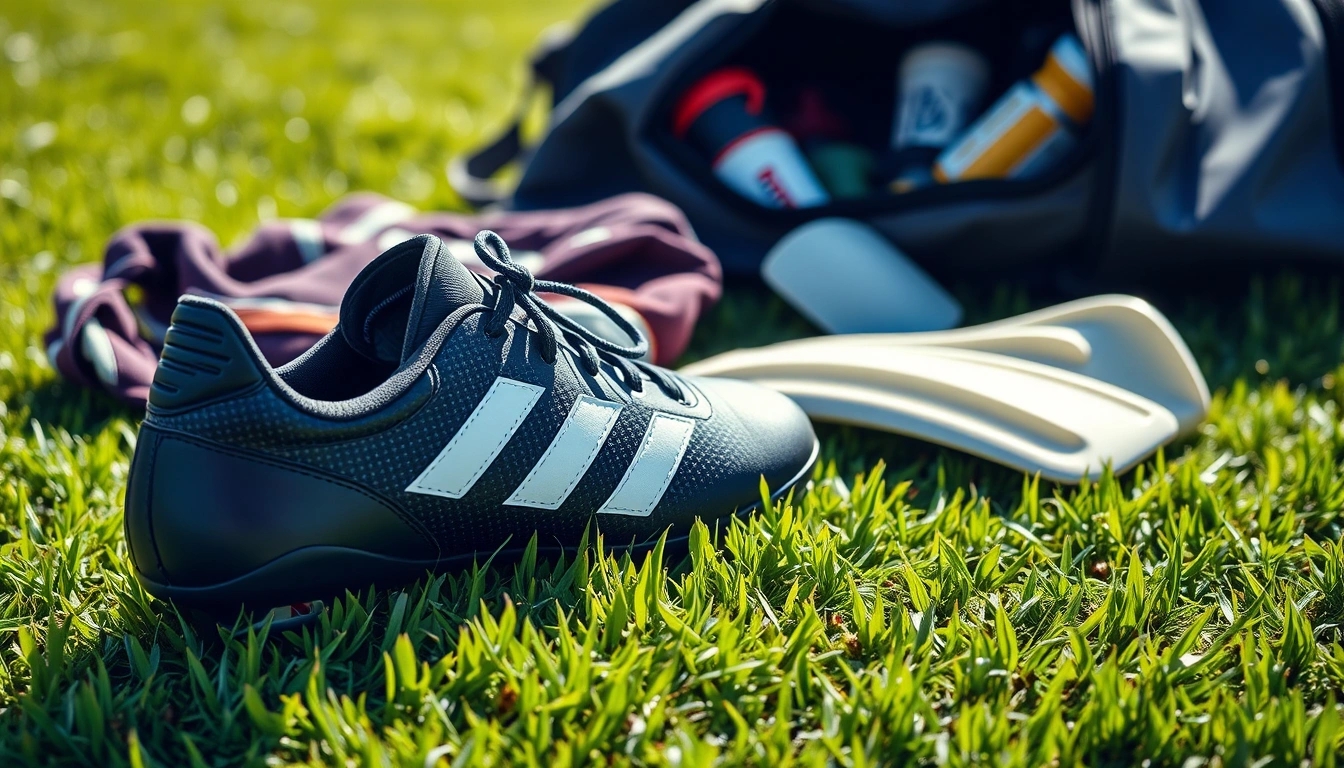
How to maintain your football gear
Alright, so you’ve finally got your football kit all set up—boots shiny, jersey crisp, and socks ready to go. But here’s the kicker: if you don’t take care of your gear properly, it’s gonna look like you’ve been dragged through a mud pit after just a couple of sessions. And nobody wants that, right? So, let’s dive into some no-nonsense tips to keep your football gear fresh and functional, because trust me, a smelly, worn-out kit is nobody’s friend.
First off, cleaning your kit isn’t just about tossing it in the washing machine and hoping for the best. Nope, it’s a bit more delicate than that. Jerseys and shorts made from synthetic, moisture-wicking fabrics need a gentle touch. Hot water? Big no. It can ruin the material’s breathability and make your kit stiff as a board. Instead, use cold water and a mild detergent. And for the love of football, don’t use fabric softeners—they kill the tech that keeps you dry during those intense drills.
- Tip 1: Turn your clothes inside out before washing to protect logos and numbers.
- Tip 2: Avoid the dryer; air-dry your kit to maintain shape and elasticity.
- Tip 3: If your boots get soaked, stuff them with newspaper to absorb moisture and speed up drying.
Now, about your boots—those bad boys take a beating every time you hit the pitch. Dirt, mud, sweat—you name it. Cleaning them properly can add years to their life. Start by knocking off loose dirt with a soft brush, then wipe them down with a damp cloth. Leather boots? Use a specialized leather conditioner to keep them supple. Synthetic boots? Just stick to mild soap and water. And whatever you do, don’t chuck them next to the radiator; too much heat warps the shape.
| Step | What to Do | What to Avoid |
|---|---|---|
| 1 | Brush off dirt with a soft brush | Scrubbing with hard brushes that damage material |
| 2 | Wipe with damp cloth and mild soap | Using harsh detergents or chemicals |
| 3 | Dry naturally, away from direct heat | Placing near heaters or in direct sunlight |
| 4 | Apply leather conditioner if applicable | Skipping conditioning on leather boots |
Storage is another thing that can’t be overlooked. Leaving your kit balled up in your bag after training? Rookie mistake. Moisture trapped in your gear is basically an open invitation for funky smells and bacteria. Always air out your kit and boots before packing them away. If you’ve got the space, keep your boots in a ventilated boot bag or at least a mesh bag so they can breathe.
Practical Storage Tips:- Hang your jersey and shorts on a hanger to keep shape.- Use boot trees or stuff boots with newspaper to maintain form.- Store socks and smaller gear in a separate compartment to avoid tangling.
So yeah, maintaining your football gear isn’t rocket science, but it does take a bit of effort. Do it right, and your kit will not only look better but perform better too. And hey, nobody wants to be the smelly guy on the pitch, so keep it clean, dry, and ready to roll.
Remember: Your gear is your partner on the pitch—treat it well, and it’ll have your back (and your feet) for seasons to come.
What to avoid wearing at all costs
What to Avoid Wearing at All Costs on the Football Pitch
Alright, listen up! When you’re gearing up for your first football training, there are some absolute no-goes you gotta know about. Trust me, nothing kills your vibe faster than showing up in the wrong kit and looking like you just got lost on the way to a costume party. Plus, some of these fashion faux pas don’t just make you look silly—they can actually cause injury or serious discomfort. So, let’s break down what you should definitely steer clear of to save yourself from embarrassment and pain.
First off, cotton t-shirts. Yeah, they might be comfy lounging on your couch, but on the pitch? Big mistake. Cotton soaks up sweat like a sponge and stays wet, which means you’ll feel heavy, sticky, and cold once the sweat starts to dry. Instead, go for moisture-wicking fabrics that pull sweat away from your skin. Your body will thank you later.
Now, about footwear—please don’t rock up in your old sneakers or, heaven forbid, casual shoes. Football boots are not just for show; they provide the grip and support your feet desperately need. Wearing the wrong shoes can lead to slips, twisted ankles, or worse. If you’re on grass, get boots with proper studs; for indoor courts, flat-soled trainers are your friends.
| Clothing Item | Why to Avoid | Better Alternative |
|---|---|---|
| Cotton T-shirts | Retains sweat, heavy & uncomfortable | Moisture-wicking synthetic shirts |
| Old Sneakers | Poor grip, risk of injury | Football boots suitable for surface |
| Baggy Jeans or Pants | Restricts movement, uncomfortable | Flexible shorts or training pants |
| Jewelry (rings, necklaces) | Can cause injury or get caught | Leave accessories at home |
Speaking of movement, baggy jeans or pants are a nightmare on the field. You want freedom to sprint, kick, and twist without feeling like you’re wrestling your own clothes. Tight but stretchy shorts or training pants are the way to go. Plus, they dry faster and look way more like a player than a tourist.
Oh, and here’s a big one: jewelry. Rings, necklaces, earrings—just leave them at home. They’re not only a distraction but a legit hazard. Imagine getting tackled and your necklace snapping or a ring digging into your finger. Not cool, and definitely not worth the bling.
- Avoid cotton socks: Like shirts, they hold moisture and cause blisters.
- Don’t wear brand-new boots without breaking them in: Your feet will hate you.
- Skip heavy or layered clothes if it’s warm: You’ll overheat and slow down.
In short, the football pitch is no place for your weekend casuals or flashy accessories. Stick to gear designed for the game, prioritize comfort and safety, and you’ll avoid looking like a rookie—because, well, you are one, but you don’t have to dress like it.
So next time you pack your bag, remember this little checklist of what NOT to wear. It’s a simple way to keep your focus on the game, not your wardrobe malfunction.
Customizing your kit: Is it worth it?
So, you’re thinking about slapping your name or lucky number on your football gear, huh? Before you rush to splash the cash on that fancy personalized jersey or custom boots, let’s pump the brakes and weigh the good, the bad, and the downright questionable about customizing your kit. It sounds cool—no doubt about that. Who doesn’t want to feel like a pro with their name shining on their back? But hold up, there’s more to it than just style points.
The perks of personalization are pretty clear. First off, it’s a great way to stand out on the pitch. When everyone’s rocking the same generic kit, having your name or number adds a touch of individuality. It’s also handy for team sports where jerseys get mixed up all the time—no more grabbing someone else’s shirt by accident (been there, done that, not fun). Plus, if you’re really serious about the game, it can boost your confidence. There’s something about seeing your name on your gear that just makes you wanna hustle harder.
| Pros | Cons |
|---|---|
| Unique identity on the field | Extra cost on top of regular gear price |
| Easy to spot your stuff | Customization might limit resale value |
| Boosts confidence and motivation | Risk of spelling errors or poor print quality |
| Great for team spirit and branding | Might not be allowed in some leagues or clubs |
But, and it’s a pretty big but, customization isn’t all sunshine and rainbows. For starters, it usually means dropping more dough. If you’re on a tight budget (and who isn’t?), that extra expense might be better spent on something more practical, like better boots or shin guards. Also, some places don’t do a great job with the printing or stitching. Nothing kills the vibe faster than a misspelled name or a number peeling off after a couple of washes. And don’t forget—some leagues or teams have strict rules about kit modifications. You might end up with gear that’s technically “custom” but not legal to wear in matches.
- Tip #1: Double-check your league’s uniform rules before ordering anything customized.
- Tip #2: If you do go custom, proofread everything carefully. Twice. Seriously.
- Tip #3: Consider starting with just your number before going full name—less chance of errors, and still looks sharp.
Now, here’s the kicker: sometimes, customization can turn into a bit of a rabbit hole. You might find yourself wanting matching socks, gloves, or even water bottles with your name on them. Before you know it, you’re the walking billboard of your own brand, and your wallet’s crying in the corner. Remember, at the end of the day, it’s your skills and passion that make you stand out—not just what’s printed on your back.
So, is personalizing your kit worth it? If you’ve got the cash to spare, love the idea of owning your unique style, and have checked all the rules, go for it! But if you’re just starting out or watching the budget, maybe hold off and invest in gear that actually improves your game first. After all, the best kit in the world won’t help you score if you’re tripping over your own feet.
Quick recap:
| Considerations | Advice |
|---|---|
| Budget | Prioritize essentials before custom extras |
| League rules | Check uniform policies to avoid surprises |
| Quality | Choose reputable customization services |
| Personal preference | Go for it if it boosts your confidence |
So, next time you’re tempted to splash your name across your kit, just ask yourself: “Will this help me play better, or just look better?” Sometimes, the answer isn’t as obvious as it seems.
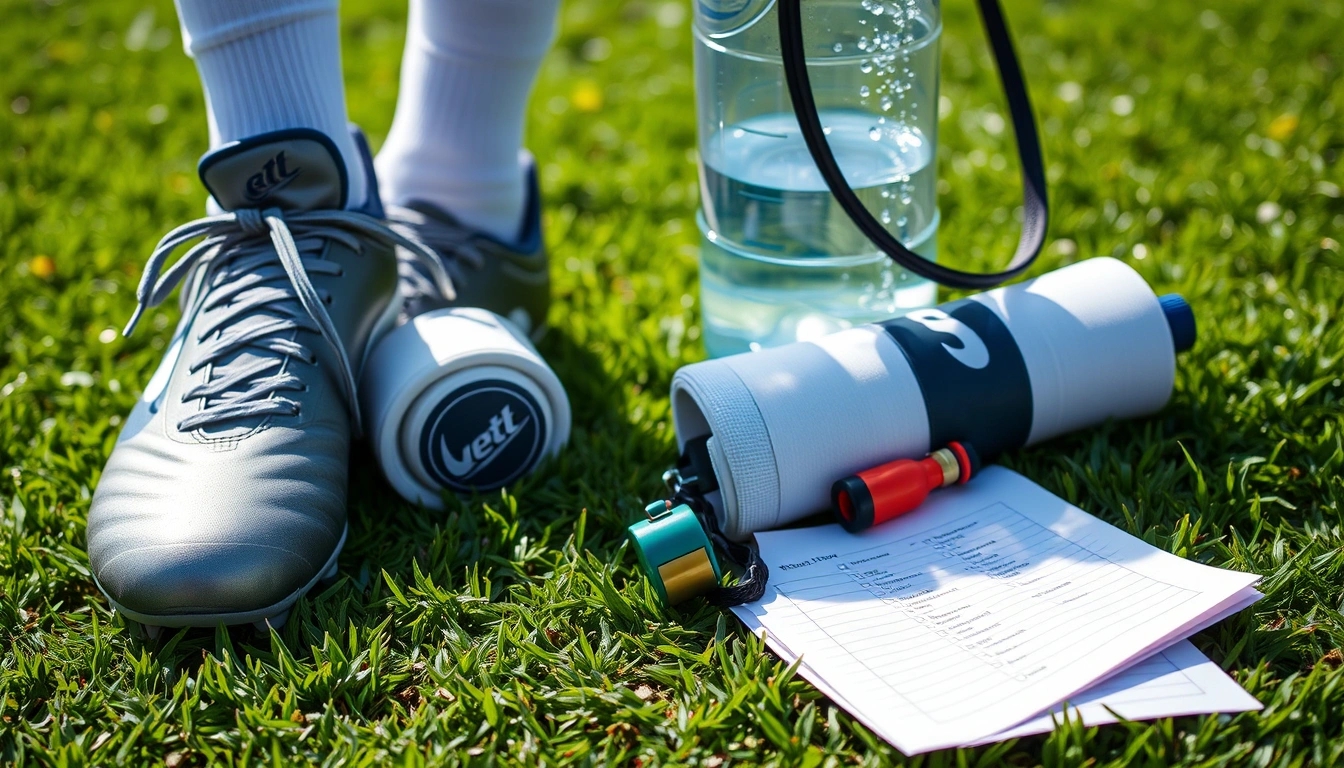
Final checklist before your first session
Alright, so you’ve made it this far—ready to hit your very first football training session. But wait! Before you rush out the door looking like you’re ready for a runway instead of a pitch, let’s have a quick reality check with a final checklist to make sure you’ve got all the essentials. Because honestly, nothing kills the vibe faster than realizing halfway through training that you forgot your water bottle or, worse, that your boots are more “torture devices” than “footwear.”
Frequently Asked Questions
- What should I wear to my first football training session?
Start with comfortable, breathable clothing like moisture-wicking shirts and flexible shorts. Avoid cotton as it traps sweat and can cause chafing. Don’t forget shin guards and proper football boots suited to the playing surface to keep you safe and agile.
- Why is comfort more important than style for beginners?
Comfort lets you focus on your game without distractions. Think of your outfit as your second skin—it needs to move with you, wick away sweat, and prevent irritation. Flashy gear might look cool, but it won’t help if you’re uncomfortable or restricted.
- How do I choose the right football boots?
Match your boots to the playing surface—firm ground boots for natural grass, turf shoes for artificial fields, and indoor shoes for indoor courts. Fit is key; boots should feel snug but not tight, like a firm handshake with your feet.
- Are socks really that important?
Absolutely! Good football socks prevent blisters, wick moisture, and provide extra cushioning. Think of them as the unsung heroes that keep your feet happy during intense drills and long sessions.
- When should I bring extra layers to training?
Weather can be unpredictable, so layering is smart. Bring a lightweight jacket or sweatshirt for cooler days, and something easy to shed if you warm up quickly. Layering is like having a safety net—you’re prepared without overpacking.
- What protective gear do I really need as a newbie?
Shin guards are non-negotiable—they protect you from unexpected kicks and tackles. Some players also use ankle supports or padded shorts, but start with the basics and add gear as you get more comfortable on the pitch.
- What common mistakes should I avoid with my football outfit?
Don’t wear old sneakers or cotton tees that soak up sweat. Avoid loose or overly tight clothing that restricts movement. Also, steer clear of jewelry or accessories that could cause injury during play.
- Can I find good quality gear on a budget?
Definitely! Look for sales, outlet stores, or trusted budget brands that focus on durability and comfort. Remember, it’s better to invest in a few quality pieces than a full kit of cheap, uncomfortable gear.
- How do I keep my football gear in top shape?
Wash your kit regularly using mild detergent and air dry to maintain fabric integrity. Store boots in a ventilated bag and replace worn-out socks or shin guards promptly to avoid discomfort and injury.
- Is customizing my kit worth it?
Personalizing your gear with your name or number can boost confidence and make your kit feel special. However, it’s usually best to wait until you’re committed to the sport to avoid unnecessary expenses.
- What should I never wear to football training?
Avoid cotton clothing, non-sport shoes, jewelry, and anything that restricts movement or could cause injury. Safety and comfort always trump fashion on the pitch.
- What’s the final checklist before heading to my first session?
Make sure you have comfortable clothes, proper football boots, shin guards, socks, a water bottle, and a light jacket if needed. Being prepared helps you focus on playing, not fussing with your outfit.

